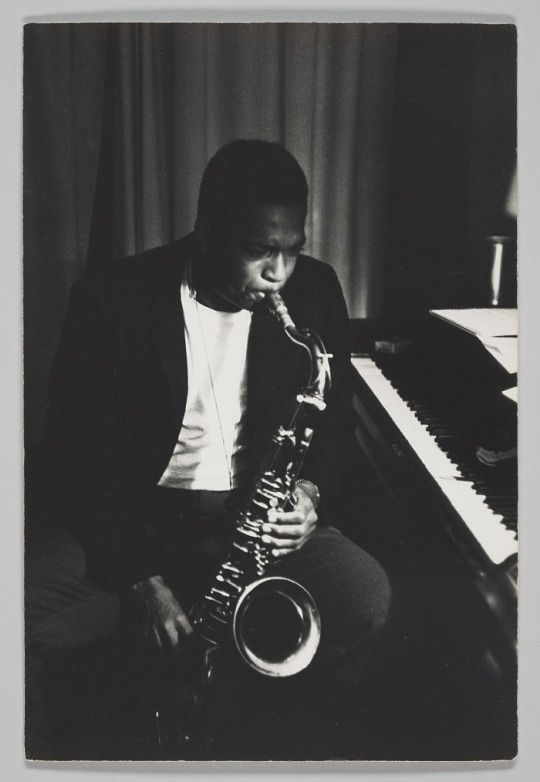#John W. Draper
Photo
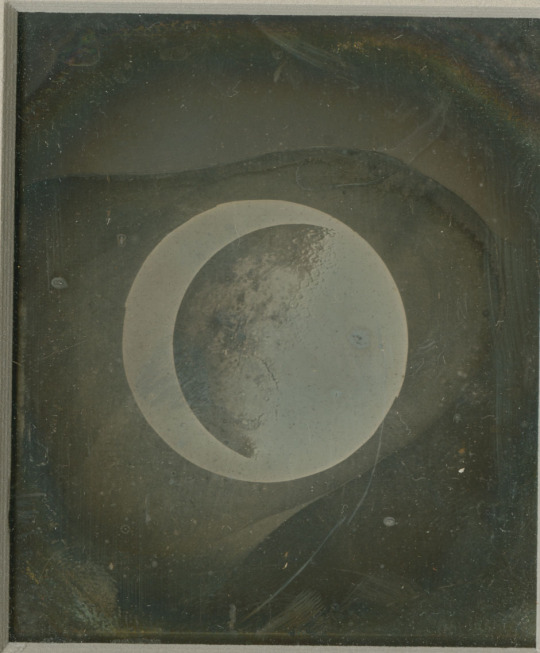
attributed to John W. Draper - Daguerreotype of Earth's moon, 1840
547 notes
·
View notes
Text
BILL CLINTON
•The Survivor: Bill Clinton in the White House by John F. Harris (BOOK | KINDLE)
•The Clinton Tapes: Wrestling History with the President by Taylor Branch (BOOK | KINDLE | AUDIO)
•The Clinton Wars by Sidney Blumenthal (BOOK | KINDLE)
•My Life by Bill Clinton (BOOK | KINDLE | AUDIO)
•The Natural: The Misunderstood Presidency of Bill Clinton by Joe Klein (BOOK | KINDLE | AUDIO)
•A Complicated Man: The Life of Bill Clinton as Told by Those Who Know Him by Michael Takiff (BOOK | KINDLE)
•The Breach: Inside the Impeachment and Trial of William Jefferson Clinton by Peter Baker (BOOK | KINDLE)
GEORGE W. BUSH
•Days of Fire: Bush and Cheney in the White House by Peter Baker (BOOK | KINDLE | AUDIO)
•Dead Certain: The Presidency of George W. Bush by Robert Draper (BOOK | KINDLE)
•500 Days: Secrets and Lies in the Terror Wars by Kurt Eichenwald (BOOK | KINDLE | AUDIO)
•Bush at War by Bob Woodward (BOOK | KINDLE | AUDIO)
•Plan of Attack by Bob Woodward (BOOK | KINDLE | AUDIO)
•State of Denial: Bush at War, Part III by Bob Woodward (BOOK | KINDLE | AUDIO)
•The War Within: A Secret White House History, 2006-2008 by Bob Woodward (BOOK | KINDLE | AUDIO)
#History#Books#Books About Presidents#Book Suggestions#Book Recommendations#Presidential Books#POTUS Books#Presidents#Presidency#Presidential History#Bill Clinton#President Clinton#George W. Bush#Bush 43#President Bush
12 notes
·
View notes
Text


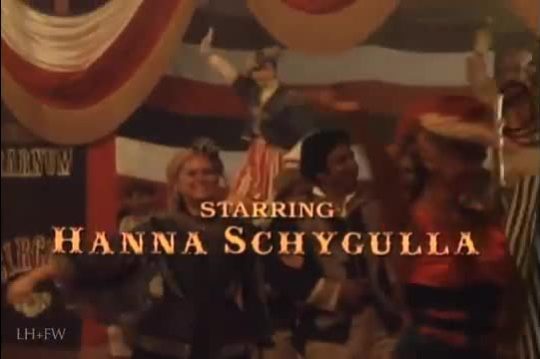

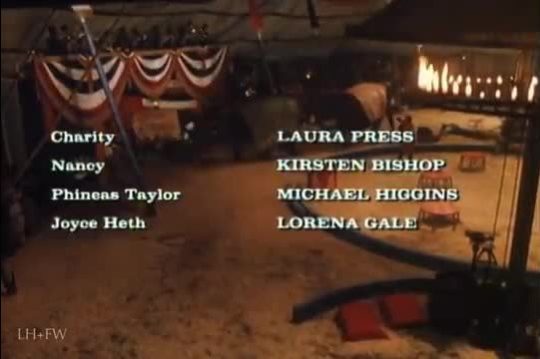



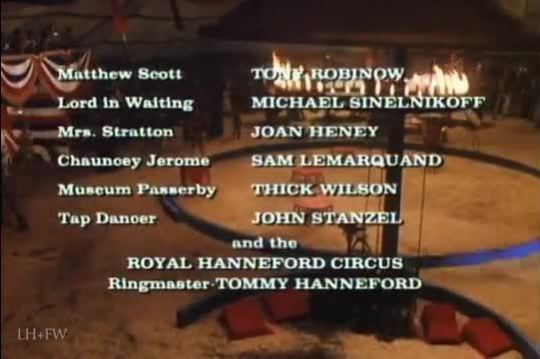
Barnum - CBS - November 30, 1986
Drama / Biography
Running Time: 120 minutes
Stars:
Burt Lancaster as Phineas Taylor Barnum
Hanna Schygulla as Jenny Lind
John Roney as Young Barnum
Sandor Raski as General Tom Thumb
Patty Maloney as Older Tom Thumb
Laura Press as Charity Barnum
Kirsten Bishop as Nancy Fish Barnum
Michael Higgins as Phineas Taylor
Lorena Gale as Joyce Heth
Deborah Hancock as Caroline Barnum
Andrew Bednarski as Young Phineas
Joe Cazalet as James Gorden Bennett
Rob Roy as Horace Greeley
Bronwen Mantel as Queen Victoria
Sean Hewitt as Coley Draper
Shawn Lawrence as R. W. Lindsay
Philip Spensely as Deacon Cox
Chris Wiggins as Francis W. Olmstead
3 notes
·
View notes
Text
Photography Essay - Sunday 2nd April 2023
How have firsts in photography progressed? And how does photography show proof?

Throughout this photo essay I hope to explore one first within photography, Then going deeper into the topic to see how it has developed since, Potentially why it has developed, And finally what peoples opinions were about this. The running order for the chosen five photographs can be seen above. They have each been paired with a quote from the Susan Sontag, On photography text from 1977. These quotes have helped with applying a narrative to each of these photographs.
First Moon Photograph

Figure 1: John W.Draper, History Colored, First time the Moon was Photographed, Pictures March 26, 1840
In figure 1 it shows the first photograph of the moon ever taken. This was in March 26th 1840, This was taken by John W. Draper from the rooftop of an observatory at New York University. (History Colored, Scott Walker, July 2020) This same person then went on to take the world’s first portrait of a woman and the first photograph of the solar spectrum.(History Colored, Scott Walker, July 2020)
A quote I believe fits with this photograph “To collect photographs is to collect the world” (On photography, 1977, pg 10). At a time where photographs didn’t exist I think this quote fits well as it would have been the first time larger numbers of people would have been able to see the moon, something not on earth, but rather in space.
Moon

Figure 2: John W.Draper, The Met, Moon, Created 1840
Also by John W.Draper is this version of the moon, as seen in figure 2. He said On March 16, 1840, he wrote in his laboratory notebook, "This evening I exposed a prepared plate to the moonbeams which had been conveyed by a double convex lens."(The Met, Moon)
Although this has no specific date it was made during the same year as the first moon photograph as seen in figure 1. This was the first successful daguerreotype ever created of the moon and it allowed for many more advances in photography in the years following. (Library of congress)
“It was only with its industrialised that photography came into an art of its own” (On photography, 1977, pg 14)
Moon Landing

Figure 3 : Moon Landing, 1969, Nasa.gov
Figure 3 shows The First Moon Landing, This first took place on 16 July 1969 – 20 July 1969. (Nasa, 2019)
As well as there being photographic evidence This there was also an Apollo Lunar Surface Journal which took place between 1969-1972 the duration of which 6 astronauts landed on the moon,this journal was so that anyone and everyone could understand how and why this was happening.(Apollo Lunar Surface Journal, 2018) .
However many people were still sceptical
as to if the moon landing was actually real, Because of this speculation I thought the quote “Photographs furnish evidence” (On photography, 1977, pg 12) fitted well with the topic. The reason for choosing this quote is because of the irony. Photographs show proof however there was large speculation as to whether the moon landing actually occurred. If it was genuine?
Lunokhod 1 - First Lunar Rover

Figure 4: Lunokhod 1 - First Lunar Rover, Nov. 17. 1970
Linking back to figure 3, not long after the first moon landing the first successful Lunar Rover happened. Figure 4 shows the Lunokhod 1. (Space.com, Dec 2016)
“Lunokhod 1, also known as Аппарат 8ЕЛ № 203 was the first of two robotic lunar rovers landed on the Moon by the Soviet Union as part of its Lunokhod program. The Luna 17 spacecraft carried Lunokhod 1 to the Moon in 1970.”
Some of the speculation as to if the photo shown in figure 3 was real could be due to the fact “In the 1960s, the United States and the Soviet Union were involved in a “space race”(the first successful lunar rover (December 24 2016). Figure 4 and 5 go nicely as a pair, as photography has captured two firsts both in the form of the space race.
A fitting quote for figure 4 is, “This gives shape to experience: stop, take a photograph, and move on.”(On photography, 1977, pg 16)There was no one physically there to experience what the rover was photographing.
Super Blue Blood Moon
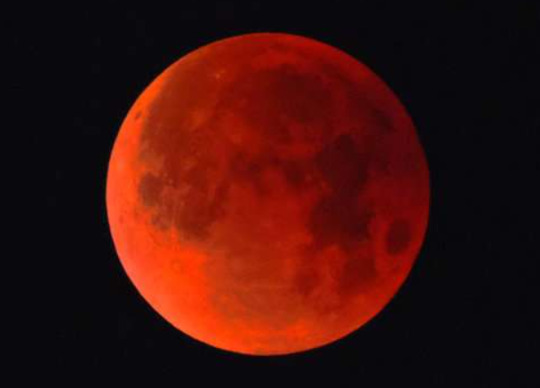
Figure 5: Lunar Showstopper: 1st super blue blood moon in 35 years, January 2018
“A "blood moon" as seen in figure 5, Happens when Earth's moon is in a total lunar eclipse. While it has no special astronomical significance, the view in the sky is striking.”(Space.com, Jan 2023)
Photography now has the ability to capture moments in history that are on the rarer side, The difference in quality can be seen between figures 1 and figures 5. A quote I find fitting for this picture is “Photographs, which fiddle with the scale of the world” (On photography, 1977, pg 11) as well as “Photography has become one of the principle devices for experiencing something, for giving an experience of participation” (On photography, 1977, pg 16)
The reason for choosing the photograph in figure 5 is because after researching, a Guardian article said “The super moon is notoriously hard to photograph but that doesn’t stop everyone trying.”(The Guardian, 2021) This works in carrying out the idea that a photograph, no matter how bad still shows you were there, and that is often the only reason people take photographs.
Photo Reference List -
Figure 1: John W.Draper, History Colored, First time the Moon was Photographed, Pictures March 26, 1840
Figure 2: John W.Draper, The Met, Moon, Created 1840
Figure 3 : Moon Landing, 1969, Nasa.gov
Figure 4: Lunokhod 1 - First Lunar Rover, Nov. 17. 1970
Figure 5: Lunar Showstopper: 1st super blue blood moon in 35 years, January 2018
Reference List -
History Colored, Scott Walker (July 2020) The first time the Moon was Photographed, John W. Draper 1840, https://historycolored.com/photos/5110/the-first-time-the-moon-was-photographed-march-26-1840/
Top war, Lunokhod-1 - the first successful lunar rover (December 24 2016), https://en.topwar.ru/106039-lunohod-1-pervyy-uspeshnyy-lunnyy-planetohod.html
Library Of Congress, The Daguerreotype Medium, Articles and Essays, https://www.loc.gov/collections/daguerreotypes/articles-and-essays/the-daguerreotype-medium/
Mail Online (Dec 2012) One small (practice) step for man:The ridiculous ways astronauts prepared for historic moon landing in 1969, https://www.dailymail.co.uk/news/article-2252168/Preparing-moon-walk-The-ridiculous-ways-astronauts-prepared-significant-moment-history.html
Nasa.gov, June 2018, Apollo Lunar Surface Journal, Editor Eric M, Jones, https://www.hq.nasa.gov/alsj
Nasa (July, 2019), Moon Landing, July 20, 1969: One Giant Leap For Mankind, https://www.nasa.gov/mission_pages/apollo/apollo11.html
Phys.org, Marcia Dunn (Jan 2018), Lunar Showstopper: 1st super blue blood moon in 35 years (Jan. 31. 2018) https://phys.org/news/2018-01-lunar-showstopper-1st-super-blue.html
Susan Sontag, On Photography, 1973 to 1977, Genre Essay
Space.com, Elizabeth Howell (Dec 2016), Lunokhod 1 - First Lunar Rover (Nov 1970), https://www.space.com/35090-lunokhod-1.html
Space.com, Scott Dutfield & Elizabeth Howell (Jan, 2023), What is a Blood Moon, https://www.space.com/39471-what-is-a-blood-moon.html
The Guardian, ‘If you zoom in it’s not too bad’: our underwhelming super blood moon pictures ,(May 2021), https://www.theguardian.com/science/gallery/2021/may/27/if-you-zoom-in-its-not-too-bad-our-underwhelming-super-blood-moon-pictures
The Met, John W.Draper, Moon, Art Created 1840, https://www.metmuseum.org/art/collection/search/789162#:~:text=Draper%2C%20a%20physician%20and%20professor,successful%20daguerreotype%20of%20the%20moon
6 notes
·
View notes
Audio
HAPPY BIRTHDAY to Stig Anderson (ABBA), Corazon Aquino, Bellini’s 1835 opera I PURITANI, Robert Burns, William Cavendish, John Cooper Clarke, Michael Cotton (The Tubes), Andy Cox (Fine Young Cannibals), Rusty Draper, James Erb, Wilhelm Furtwängler, Benny Golson, Malcolm Green (Split Enz), Kitahara Hakushū, George Harrison’s 1988 “When We Was Fab” single, Etta James, Alicia Keys, Harold Lloyd, Jr., Witold Lutosławski, Ewan MacColl, Shirley Mason a.k.a. “Sybil,” W. Somerset Maugham, Mendelssohn’s 1858 “Wedding March,” Florence Mills a.k.a. The Queen of Happiness, Toše Proeski, Jan Sandström, Floyd “Guitar” Smith, Moses “Whispering” Smith, Kurt Stenzel, Edmund Sylvers, Gary Tibbs (Roxy Music), Timothy White, Haini Wolfgramm (The Jets), and the great, quick-study and rock-steady drummer Bill Matlack, Jr. I joined Bill on the stage many times, with Ben Kaplan, Neon Cactus, and others. Bill also played on my FIRE album and several other notable recordings—including this one with Davy Jones (Monkees), the gospel-pop anthem “When All Else Fails.” Meanwhile, HB BM and thank you for keeping us on the beat. https://johnnyjblairsingeratlarge.bandcamp.com/track/when-all-else-fails
#billmatlack #drummer #davyjones #monkees #gospel #pop #johnnyjblair #benkaplan #neoncactus #countryrock #williamsport #pennsylvania
2 notes
·
View notes
Text
A History of Newburgh Lodge No. 174, F. & A.M.
A History of Newburgh Lodge No. 174, F. & A.M. provides a historical account of the lodge, detailing its founding in Newburgh, Indiana, in 1854. It traces the origins to an inaugural meeting under a dispensation with key figures like Draper Chipman and Azel Freeman leading the masonic lodge. The narrative connects local events such as the burial of Mason John W. Palmer in 1851, hinting at an…

View On WordPress
0 notes
Text
Masterlist: Lesson Recommended Readings
Masterlist
BUY ME A COFFEE
✨Lucy E. Thompson, 'Vermeer's Curtain: Privacy, Slut-Shaming and Surveillance in "A Girl Reading a Letter", Survelliance & Society 2017
✨Gregor Weber, 'Paths to Inner Values,' in Gregor Weber, Pieter Roelofs, and Taco Dibbits, Vermeer, (NewYork: Thames & Hudson, 2023)
✨Bernard Berenson on Masaccio, panel in National Gallery, 1907
✨Giorgio Vadari, Lives of the Most Eminent Painters, Sculptors and Architects (online translation published, 1912)
✨Marjorie Munsterberg, Writing about Art
✨Paul Binski, Westminster Abbey and the Plantagenets: Kingship and the Representation of Power, 1200-1400, 1955
✨Toby Green, A Fistful of Shells: West Africa from the River of the Slave Trade to the Age of Revolution, 'Rivers of Cloth, Masks of Bronze: The Bights of Benin and Biafra', 2019
✨Pieter Roelofs, 'Girls with Pearls', extract from 'Vermeer's Tronies' in Gregor Weber, Pieter Roelofs, and Taco Dibbits, Vermeer, (NewYork: Thames and Hudson, 2023)
✨Decolonial/Postcolonial Voices
✨Honour, Hugh and Fleming, John. A World History of Art. London: Laurence King Publishing. 7th ed, 2005
✨The Painter of Modern Life, Charles Baudlaire, 1863 Part 2, Part 3 Other Quality
✨The Photographers Eye, John Szarkowski, 1966
✨Elkins, James. Stories of Art. London: Routledge, 2002
✨Paragraphs on Conceptual Art, Sol Lewitt, 1967
✨Nikolaus Pevsner, The Buildings of England. London, volume 1, The Cities of London and Westminster, 1973
✨Annie E. Coombes, Reinventing Africa: Museums, Material Culture and Popular Imagination in Late Victorian and Edwardian England, 'Material Vulture at the Crossroads of Knowledge: The Case of the Benin "Bronzes", 1994
✨Hatt, Michael and Klonk, Charlotte, Art History: A Critical Introduction to its Methods, 2006
✨Meyer Schapiro, H. W. Janson and E. H. Gombrich, ‘Criteria of Periodization in the History of European Art’, New Literary History, 1970
✨Thomas DaCosta Kaufmann, ‘Periodization and its Discontents’, Journal of Art Historiography, 2010
✨Kathryn Wysocki Gunsch, The Benin Plaques: A 16th Century Imperial Monument, 2018
✨D'Alleva, Anne. How to Write Art History. London: Lawrence King Publishing, 2010/2013/2015
✨Christopher Wilson, The Gothic Cathedral: the Architecture of the Great Church, 1130 - 1530, 1990
✨Anne D'Alleva, Methods and Theories of Art History, 2005/2012
✨Jonathan Alexander and Paul Binski (eds.), Age of Chivalry: Art in Plantagenet England, 1200-1400, 1987
✨Paul Binski, Ann Massing, and Marie Louise Sauerberg (eds.), The Westminster Retable: History, Technique, Conservation, 2009
✨Christa Gardner von Teuffel, ‘Masaccio and the Pisa Altarpiece: A New Approach’, Jahrbuch der Berliner Museen, 1977 Part 2
✨John Shearman, ‘Masaccio’s Pisa Altar-Piece: An Alternative Reconstruction’, The Burlington Magazine, 1966
✨Kathryn Wysocki Gunsch, ‘Art and/or Ethnographica?: The Reception of Benin Works from1897–1935’, African Arts, 2013
✨Eliot Wooldridge Rowlands, Masaccio: Saint Andrew and the Pisa altarpiece, 2003
✨Svetlana Alpers, The Art of Describing: Dutch Art in the Seventeenth Century, 1983
✨Laura Sangha, ‘On Periodisation: Or what’s the best way to chop history into bits’, The Many Headed Monster, 2016
✨A Gangatharan, ‘The Problem of Periodization in History’, Proceedings of the Indian History Congress, 2008
✨McHam, Sarah Blake, "Donatello's Bronze David and Judith as Metaphors of Medici Rule in Florence," Art Bulletin, 2001
✨Eve Borsook, ‘A Note on Masaccio in Pisa’, The Burlington Magazine, 1961
✨Gombrich, E.H. The Story of Art, London: Phaidon Press Ltd, numerous editions
✨Paul Binski, 'The Cosmati at Westminster and the English Court Style', The Art Bulletin 72, 1990
✨Lindy Grant and Richard Mortimer (eds.), Westminster Abbey: The Cosmati Pavements, 2002
✨Peter Draper, The Formation of English Gothic: Architecture and Identity, 2006
✨Paul Crossley, ‘English Gothic Architecture’, in Jonathan Alexander and Paul Binski (eds.), Age of Chivalry: Art in Plantagenet England, 1200-1400, 1987
✨James H. Beck, Masaccio: The Documents, 1978
✨R. A. Donkin, Beyond Price: Pearls and Pearl-Fishing: Origins to the Age of Discoveries, 1998
✨Nanette Salomon, ‘From Sexuality to Civility: Vermeer’s Women’, National Gallery of Art, Studies in the History of Art, 1998
✨Irene Cieraad, ‘Rocking the Cradle of Dutch Domesticity: A Radical Reinterpretation of Seventeenth-Century “Homescapes” 1’, Home Cultures, 2019
✨H. Perry Chapman, ‘Women in Vermeer’s home: Mimesis and ideation’, Nederlands Kunsthistorisch Jaarboek,2000
✨Christopher Wilson, ‘The English Response to French Gothic Architecture, c. 1200-1350’, in Jonathan Alexander and Paul Binski (eds.), Age of Chivalry: Art in Plantagenet England, 1200-1400, 1987
✨Helen Elizabeth Lacey, ‘A Comparison of the Illuminations of Liber Regalis with those of the Coronation Book of Charles V of France’, York medieval yearbook, Vol. 1, 2002.
✨Johann Joachim Wicklemann (1717 - 1768) from Reflections on the Imitation of Greek Works in Painting and Sculpture
✨Antonie Cotpel (1661-1722) on the grand manner, from 'On the Aesthetic of the Painter'
✨Andre Felibien (1619-1695) Preface to Seven Conferences
✨Charles Le Burn (1619-1690) 'First Confrence'
✨Various Authors (Reviews) on Manet's Olympia
✨Zionism and its Religious Critics in fin-de-siecle Vienna, Robert S. Wistrich, 1996
✨Sex, Lies and Decoation: Adolf Loos and Gustav Klimt, Beatriz Colomina, 2010
✨Women Writers and Artists in Fin-de-Siecle Vienna, Helga H. Harriman, 1993
✨Fashion and Feminism in "Fin de Siecle" Vienna, Mary L. Wagner, 1989-1990
✨5 Eros and Thanatos in Fin-de-Siecle Vienna, Sigmund Freud, Otto Weininger, Arthur Schitzler, 2016
✨Recent Scholarship on Vienna's "Golden Age", Gustav Klimt, and Egon Schiele, Reinhold Heller, 1977
✨Maternity and Sexulaity in the 1890s, Wendy Slatkin, 1980
✨Andre Breton (1896 - 1957) and Leon Trotsky (1879 - 1940) 'Towards a Free Revolutionary Art'
✨Sergei Tretyakov (1892 - 1939) 'We Are Searching' and 'We Raise the Alarm'
✨George Grosz (1893 - 1959) and Weiland Herzfeld (1896 - 1988) 'Art is in Danger'
✨Paul Gaugin (1848 - 1903) from three letters written before leaving for Polynesia
✨Siegfried Kracauer (1889 - 1966) from 'The Mass Ornament'
✨Victor Fournel (1829 - 1894) 'The Art of Flanerie'
✨Various Author's (Reviews) on Mante's Olympia
#art hitory#art tag#essay#paintings#art exhibition#art show#writing#artwork#art#art gallery#masterlist#writing tings#creative writing#personal essay#essential#essay writing#literacy#academic writing#critical thinking#on writing#art history#artists#illustration#art style#drawing#illlustration#architecture
0 notes
Photo

“Warren to Hang February 3, Says ‘Jury Did Its Best’,” Toronto Star. November 11, 1932. Page 1 & 3.
----
‘No Fault to Find With Verdict’ – Hicks Gets 15 Years
====
WIVES IN TEARS
----
After Mr. Justice Raney had sentenced him to be hanged on Feb. 3, next, for murdering Dr. William G. More, Ewart G. Warren, 27, walked into the York assize court cell last night and said unemotionally:
‘I am feeling fine; I have no fault to find with the verdict. The jury did its best.’
His brother-in-law, Harold T. Hicks, 23, sentenced to 15 years in Portsmouth penitentiary, when convicted of manslaughter, expressed thanks to the jurymen, and entered the cell shortly behind to Warren to announce: ‘Well, boys, I got a break. I got fifteen years.’
Warren smiled in his peculiar customary manner when Mr. Justice Raney pronounced the death sentence. Hicks all but collapsed in the dock but quickly recovered, in time to be led to the cell. Fifteen minutes after the penalties were imposed, the two were on their way to the Toronto kail, incompany with three other prisoners who had been sentenced for other misdemeanors early last evening.
The jury had retired at 3.50 p.m. The verdict was returned at 8.32 p.m.
‘Stood Up Well,’ Says Father
Both defence counsel, W. B. Horkins, and F. G. Gardiner, the jail chaplain, Rev. T. W. Barnett, and Capt. Wallace Bunton of the Salvation Army shook hands and conversed with Warren and Hicks before they left the city hall at about 9 o’clock. Meantime, in the corridor, the gray-haired father of Warren, who had advised the ‘boy’ to keep his head up, gripped the hands of Chief Constable D. C. Draper, Crown Prosecutor Norman B. Sommerville, K.C., Mr. Horkins, Hugh John Macdonald and several others.
‘It cannot be helped,’ remarked Mr. Warren, Sr., with tear-dimmed eyes. ‘But Ewart stood up well, didn’t he?’
The wives of Warren and Hicks and Warren’s sisters, who had retained in an ante-room, wept bitterly when the sentences were made known to them.
The jury recommended mercy for Warren.
‘You understand, of course, gentlemen,’ remarked Mr. Justice Raney, ‘that I have no opportunity to mitigate the penalty?’ Some jurors nodded their heads in assent.
At this time, Hicks grasped the dock rail, leaned forward and looked for a moment to be in the act of swooning. Warren, though very pale and tense, sat erect and stared straight ahead.
No Option, Judge Says
‘I suppose, Ewart Warren,’ his lordship said to the convicted man,’ that if the judges had any option on the matter between capital punishment and life imprisonment, there would be very sentences of death. But the judges have nothing to say about it. The law says that everyone committing murder shall, on conviction thereof, be sentenced to death.’
Warren stood with shoulders square, a smile on his face, as the death sentence was passed.
Mr. Horkins asked for a stay of execution ‘as long as you see fit,’ in view of the recommendation to mercy, so that the minister of justice and authorities might have time to be informed with a view to commutation of sentence.
‘I would suggest, my lord,’ said Mr. Sommerville, ‘that the execution be not sooner than the 15th of January.’
Warren looked toward the floor for an instant as the sentence was passed, then braced up. Sheriff’s Officer Gilbert grasped his sleeve to take him from the dock. The prisoner looked at the jurors as he passed, but there was no malice in his gaze.
Says Jury: ‘Lenient to Hicks’
‘The jury have taken a very lenient view in Hicks’ case,’ the crown said. ‘They have been extraordinarily lenient.’
‘I’m glad they did, Mr. Sommerville,’ Mr. Justice Raney interjected.
After bowing to his counsel, Hicks left the dock and bowed again to the jury. ‘Thank you, gentlemen,’ he said, then passed out of the court and to the cell.
Shortly after four o’clock, the jury returned when Mr. Sommerville made a suggestion. His Lordship redirected the jury in reference to bodily injury, as it related to the murder charge.
At 5.17 p.m. the jurors filed into court again and wanted to know if a separate verdict could be found for each of the accused on one count.
‘I might say you could find both guilty of murder, if you so decide on the evidence, or both guilty of manslaughter; or you might find one guilty of murder and one guilty of manslaughter,’ Mr. Justice Raney directed. ‘I don’t say you could find Hicks guilty of murder if you find Warren guilty of manslaughter. But you might find Warren guilty of murder and Hicks guilty of manslaughter.’
Warren Sleeps Well
In his death cell at Toronto Jail, where he will live until his executive day, February 3, guarded by a death watch of three, Warren spent his first night under sentence quietly and peacefully and arose this morning and had a good breakfast.
Warren held up better and showed more self-contriol than the officials expected. After saying good-by to his white-haired father, his wife and sisters at the city hall, Waren was taken to the jail. He was visited for a few minutes by Captain Wallace Button, J.P. of the Salvation Army, who has been his spiritual adviser and will act in that capacity during Warren’s stay in the death cell.
Warren told Captain Bunton that he was feeling all right and was satisfied with the sentence.
‘The jury could not do anything else or better under the circumstances, Warren told me,’ stated Capt. Bunton. ‘He said Justice Raney was a real gentlemen and was fair in every way. He said he was thankful to the jury for their recommendation for mercy. He said he will live in the hope that the authorities at Ottawa may see their way clear to take the recommendation into consideration.’
Harold Hicks, Warren’s brother-in-law, who was found guilty of manslaughter and sentenced to 15 years, may be tried for armed robbery on the five charges laid against him and Warren in connection with hold-ups of three dentists and two gasoline station operators in October, 1930, in Toronto.
‘Whether further charges will be proceeded with against Hicks, will rest with the crown attorney,’ Assistant Inspector John Chisholm stated to-day when questioned by The Star.
#toronto#murder#assizes court#sentenced to be hanged#death sentence#capital punishment#armed robbery#armed robbers#robbery gone wrong#shot to death#warren & hicks case#appeal for clemency#sentenced to the penitentiary#kingston penitentiary#great depression in canada#crime and punishment in canada#history of crime and punishment in canada
0 notes
Text
Collection Materials from November 3rd Class Session
The following boxes from archival collections, related to themes presented by Professor Beverly Gage, were used in the class session in the Gates special collections classroom on Thursday, November 3, 2022.
Collections from the Beinecke Library:
Muriel Draper Papers (YCAL MSS 49) -- Series II, Box 11 (see especially articles on Draper's 1934-1935 visit to the Soviet Union in folders 357, 361, 371-374, and 388).
Leon F. Litwack Collection of Berkeley, California, Protest Literature (WA MSS 2616) -- Series I, Box 1.
Rebecca West Collection (GEN MSS 239) -- Series I, Box 3 (see especially correspondence with Doris Stevens, 1922-1959, in folders 100-115, some of which reflects West's involvement in the controversies surrounding Joseph McCarthy and the American anti-Communist movement).
Walter Francis White and Poppy Cannon Papers (JWJ MSS 38) -- Series I, Box 1 (see especially correspondence with Gloster B. Current, 1949-1955, regarding infiltration of the N.A.A.C.P. by the Communist Party in folder 43).
Terry Tempest Williams Papers (WA MSS S-2700) -- Series I, Box 102.
Collections from Manuscripts and Archives, Sterling Memorial Library:
American Immigration Conference Board Records (MS 614). Box 1.
Chester Bowles Papers (MS 628) -- Part IV, Series I, Box 157 (see especially correspondence with Adlai Stevenson, 1953-1956, in folders 622-627).
William F. Buckley, Jr. Papers (MS 576) -- Part I, Box 30 (see especially correspondence, clippings, and other materials relating to Barry Goldwater, 1964).
William Sloane Coffin, Jr. Papers (MS 1665) -- Series I, Box 13.
John Anthony Danaher Papers (MS 165) -- Series III, Box 64 (see especially correspondence relating to Richard Nixon, 1945-1971, in folder 776).
Gus Hall Paper (MS 2113) -- Series I, Box 5.
Victor Jeremy Jerome Papers (MS 589) -- Series III, Box 40.
Duncan Chaplin Lee and John Lee Papers (MS 2062) -- Series I, Box 1.
Dwight Macdonald Papers (MS 730) -- Series II, Box 126.
Alfred Whitney Griswold, President of Yale University, Records (RU 22) -- Series I, Box 2.
Secretary's Office, Yale University, Records (RU 49) -- Series III, Box 183 (see correspondence of H.B. Fisher, 1943-195, in folder 531).
Harry W. Selden Right-Wing Materials Collection (MS 2069) -- Series I, Box 1.
George Howard Edward Smith (MS 458) -- Series III, Box 31.
Rose Pastor Stokes Papers (MS 573) -- Series I, Box 3.
Harry Weinberger Papers (MS 553) -- Original accession, Box 28 (see especially Emma Goldman correspondence, 1915-1919, in folders 10-21).
Yale Library Contacts
Joshua Cochran: Curator, American History and Diplomacy, Beinecke Library - [email protected]
James Kessenides: Kaplanoff Librarian for American History, Sterling Memorial Library - [email protected]
Bill Landis: Education Program Director - [email protected]
0 notes
Note
If I had to read 1 book about every President from Nixon to Trump (or even Biden), which should I read?
•RICHARD NIXON
Nixon is a really tough one because there are so many great biographies about Nixon, as well as books that either focus specifically on his Presidency -- like President Nixon: Alone in the White House by Richard Reeves (BOOK | KINDLE) -- or on the overall political climate of his era, like Rick Perlstein's books, particularly Nixonland: The Rise of a President and the Fracturing of America (BOOK | KINDLE) and The Invisible Bridge: The Fall of Nixon and the Rise of Reagan (BOOK | KINDLE).
But I'm going to cheat and pick the three-volume series by Stephen Ambrose:
•Nixon: The Education of a Politician, 1913-1962 (BOOK | KINDLE)
•Nixon: The Triumph of a Politician, 1962-1972 (BOOK | KINDLE)
•Nixon: Ruin and Recovery, 1973-1990 (BOOK | KINDLE)
•GERALD FORD
It hasn't been released yet, but you'll have to take my word that nothing comes close to Richard Norton Smith's forthcoming book, An Ordinary Man: The Surprising Life and Historic Presidency of Gerald R. Ford (BOOK | KINDLE). If you can't wait until April, I'd suggest checking out Barry Werth's 31 Days: Gerald Ford, the Nixon Pardon and a Government in Crisis (BOOK | KINDLE). It's not a full-fledged biography, but it's a captivating look at Ford' first month in the White House following the resignation of President Nixon. Donald Rumsfeld's When the Center Held: Gerald Ford and the Rescue of the American Presidency (BOOK | KINDLE) also deserves an honorable mention.
•JIMMY CARTER
His Very Best: Jimmy Carter, A Life by Jonathan Alter (BOOK | KINDLE)
•RONALD REAGAN
Edmund Morris’s Dutch: A Memoir of Ronald Reagan (BOOK | KINDLE) is very divisive because of the controversial storytelling technique that Morris used to structure the biography, but I think the extent of his research and depth of detail overpowers any criticism about his writing choices. For those who would prefer a more traditional single-volume biography, you can’t go wrong with Reagan: The Life by H.W. Brands (BOOK | KINDLE).
•GEORGE H.W. BUSH
I can say, without any hesitation, that Jon Meacham’s Destiny and Power: The American Odyssey of George Herbert Walker Bush (BOOK | KINDLE) is the best, single-volume biography ever written about any American President. In fact, in my opinion, it might be the best, single-volume biography ever written about anybody anywhere at any time.
•BILL CLINTON
I don’t think that anyone has written what I would consider the definitive overall biography of Bill Clinton’s life and Presidency yet. The Survivor: Bill Clinton in the White House by John F. Harris (BOOK | KINDLE) is excellent but focused, obviously, just on Clinton’s Presidency. I look forward to someone eventually writing THE biography of Bill Clinton.
•GEORGE W. BUSH
Much like President #42, I think we’re still waiting for the definitive, all-encompassing biography of 43. There are two excellent books about his years in the White House that I strongly recommend: Robert Draper’s Dead Certain: The Presidency of George W. Bush (BOOK | KINDLE), and Days of Fire: Bush and Cheney in the White House (BOOK | KINDLE) by Peter Baker, who has long been one of my favorite reporters about the modern Presidency.
•BARACK OBAMA
Like his two immediate predecessors, we’re still waiting for a complete biography about Obama’s entire life and political career. But David J. Garrow’s Rising Star: The Making of Barack Obama (BOOK | KINDLE) comes closest. It is meticulously researched and incredibly detailed -- the book is nearly 1,500 pages long and only takes us up through Obama’s election as President in 2008. But it is undoubtedly the definitive book about Obama’s early life and political rise -- there’s nothing else that comes even close.
•DONALD TRUMP
Unlike Clinton, Bush 43, and Obama, there is a full-fledged biography of Donald Trump that encompasses his life as well as his Presidency. Maggie Haberman worked on Confidence Man: The Making of Donald Trump and the Breaking of America (BOOK | KINDLE) during her years of reporting on Trump and published her biography of him last fall. Haberman has long been one of the best informed and most relentless reporters about Trump for much of the last decade, so her book is as close to definitive as one can get about a recent President.
•JOE BIDEN
It’s definitely too early for any complete biography about Biden so far. If you’re looking for something about him, I’d suggest Chris Whipple’s brand-new book, The Fight of His Life: Inside Joe Biden’s White House (BOOK | KINDLE). And Gabriel Debenedetti’s The Long Alliance: The Imperfect Union of Joe Biden and Barack Obama (BOOK | KINDLE) is a revealing look at their relationship from their brief time serving together in the Senate to the 2008 campaign where they started as opponents and then running mates, through their partnership in the Obama Administration and up to Biden’s 2020 victory and early days in the White House.
#Presidents#Books#Books about Presidents#History#Presidents Books#Book Recommendations#Book Suggestions#Presidential History#Politics#Reading List#Richard Nixon#President Nixon#Gerald Ford#President Ford#Jimmy Carter#President Carter#Ronald Reagan#President Reagan#George H.W. Bush#President Bush#Bush 41#Bill Clinton#President Clinton#George W. Bush#Bush 43#Barack Obama#President Obama#Donald Trump#President Trump#Joe Biden
40 notes
·
View notes
Text
Moon & fire

Il tetto si è bruciato:
ora
posso vedere la luna.
Mizuta Masahide
1 note
·
View note
Text

Promotional Photo of Klaatu | 1982
© 1982, Deborah Samuels.
#80s#1982#B&W#Klaatu#John Woloschuk#Terry Draper#Dee Long#There’s not enough Klaatu love on here so I’m gonna post some!!!#Psychedelic Rock#Prog Rock
11 notes
·
View notes
Photo

Mad Men, S1 E9 “Shoot” (2007-2015)
I have no idea who edited this picture but I love it
#john hamm#january jones#mad men#don draper#betty draper#betty francis#tv shows#aesthetic#1960s aesthetic#netflix#dark#vintage#b&w photography
53 notes
·
View notes
Text
MAD MEN BOOK RECS
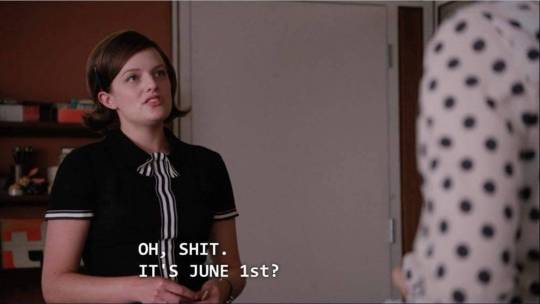
Happy pride/Don Draper’s fake birthday ❤️ Below the cut, I’ve listed info on my favorite Mad Men related books and a couple I haven’t read yet but I’m really looking forward to. Let me know if you check any of these out, or if you have any other recommendations! ❤️
Mad Men Carousel: The Complete Critical Companion by Matt Zoller Seitz
“Mad Men Carousel is an episode-by-episode guide to all seven seasons of AMC's Mad Men. This book collects TV and movie critic Matt Zoller Seitz’s celebrated Mad Men recaps—as featured on New York magazine's Vulture blog—for the first time, including never-before-published essays on the show’s first three seasons. Seitz’s writing digs deep into the show’s themes, performances, and filmmaking, examining complex and sometimes confounding aspects of the series. The complete series—all seven seasons and ninety-two episodes—is covered.
Each episode review also includes brief explanations of locations, events, consumer products, and scientific advancements that are important to the characters, such as P.J. Clarke’s restaurant and the old Penn Station; the inventions of the birth control pill, the Xerox machine, and the Apollo Lunar Module; the release of the Beatles’ Revolver and the Beach Boys’ Pet Sounds; and all the wars, protests, assassinations, and murders that cast a bloody pall over a chaotic decade.
Mad Men Carousel is named after an iconic moment from the show’s first-season finale, “The Wheel,” wherein Don delivers an unforgettable pitch for a new slide projector that’s centered on the idea of nostalgia: “the pain from an old wound.” This book will soothe the most ardent Mad Men fan’s nostalgia for the show. New viewers, who will want to binge-watch their way through one of the most popular TV shows in recent memory, will discover a spoiler-friendly companion to one of the most multilayered and mercurial TV shows of all time.”
A classic episode-by-episode look at the series from reviewer Matt Zoller Seitz.
The Legacy of Mad Men — Cultural History, Intermediality and American Television (Edited by Karen McNally, Jane Marcellus, Teresa Forde, and Kirsty Fairclough)
“For seven seasons, viewers worldwide watched as ad man Don Draper moved from adultery to self-discovery, secretary Peggy Olson became a take-no-prisoners businesswoman, object-of-the-gaze Joan Holloway developed a feminist consciousness, executive Roger Sterling tripped on LSD, and smarmy Pete Campbell became a surprisingly nice guy. Mad Men defined a pivotal moment for television, earning an enduring place in the medium’s history.
This edited collection examines the enduringly popular television series as Mad Men still captivates audiences and scholars in its nuanced depiction of a complex decade. This is the first book to offer an analysis of Mad Men in its entirety, exploring the cyclical and episodic structure of the long form series and investigating issues of representation, power and social change. The collection establishes the show’s legacy in televisual terms, and brings it up to date through an examination of its cultural importance in the Trump era. Aimed at scholars and interested general readers, the book illustrates the ways in which Mad Men has become a cultural marker for reflecting upon contemporary television and politics.”
This is a really beautiful collection. It was published in 2019. It’s rather expensive. (I found a used copy for much cheaper.) If you can afford it, I really, really recommend buying it. There is a pdf floating around if you know where to look though. But like I said, it’s really amazing work and the women who curated it deserve high praise and compensation.
A few favorite essays of mine include “Don Draper and the Enduring Appeal of Antonioni’s La Notte” by Emily Hoffman, “Mad Men’s Mid-Century Modern Times” by Zak Roman, “Mad Men and the Staging of Literature via Ken Cosgrove and His Problems” by Aaron Shapiro, and “What Jungian Psychology Can Tell Us About Don Draper’s Unexpected Embrace of Leonard in Mad Men’s Finale” by Marisa Carroll.
Mad Men and Philosophy: Nothing Is as It Seems (Edited by William Irwin, James B. South, and Rod Carveth)
“With its swirling cigarette smoke, martini lunches, skinny ties, and tight pencil skirts, Mad Men is unquestionably one of the most stylish, sexy, and irresistible shows on television. But the series becomes even more absorbing once you dig deeper into its portrayal of the changing social and political mores of 1960s America and explore the philosophical complexities of its key characters and themes. From Socrates, Plato, and Aristotle to John Kenneth Galbraith, Milton Friedman, and Ayn Rand, Mad Men and Philosophy brings the thinking of some of history's most powerful minds to bear on the world of Don Draper and the Sterling Cooper ad agency. You'll gain insights into a host of compelling Mad Men questions and issues, including happiness, freedom, authenticity, feminism, Don Draper's identity, and more.”
This collection was published just a month before the start of season 4, so it only concerns the first three seasons of the show. As such, it includes some assumptions that are proven false and a few strange misreadings that I’m sure would’ve been cleared up had they had the rest of the show at their disposal. But there are some great philosophical insights and analysis.
I haven’t yet read the whole collection, but my favorite essay of what I’ve read so far was “Pete, Peggy, Don, and the Dialectic of Remembering and Forgetting” by John Fritz.
The Fashion File: Advice, Tips, and Inspiration from the Costume Designer of Mad Men (by costume designer Janie Bryant)
From Joanie's Marilyn Monroe-esque pencil skirts to Betty's classic Grace Kelly cupcake dresses, the clothes worn by the characters of the phenomenal Mad Men have captivated fans everywhere. Now, women are trading in their khakis for couture and their pumas for pumps. Finally, it's hip to dress well again. Emmy-Award winning costume designer Janie Bryant offers readers a peek into the dressing room of Mad Men, revealing the design process behind the various characters' looks and showing every woman how to find her own leading lady style--whether it's vintage, modern, or bohemian.
Bryant's book will peek into the dressing room of Mad Men and reveal the design process behind the various characters' looks. But it will also help women learn how fashion can help convey their personality. She will help them cultivate their style, including all the details that make a big difference.
Bryant offers advice to ensure that a woman's clothes convey her personality. She covers everything from where to find incredible vintage clothing and accessories to how to pair those authentic pieces with modern shoes and jeans. Readers will learn how to find their perfect bra size, use color to convey a mood, and invest in the ten essentials every woman should own. And just so the ladies don't leave their men behind, there's even a section on making them look a little more Don Draper-dashing.
I recently ordered a used copy of this book and haven’t yet received it, but I’m very much looking forward to it. Like Mad Men and Philosophy listed above, it was published between season 3 and 4, so unfortunately does not cover the whole show. It sounds like it might just cover the women’s costume design, though I’m not sure. Janie Bryant is such a meticulous, genius costume designer that I can’t wait to read it. Relatedly, you should follow her incredible costume design instagram where she posts lots of her work from Mad Men and other shows with fascinating insight into her process.
The Universe is Indifferent: Theology, Philosophy, and Mad Men (Edited by Ann W. Duncan and Jacob L. Goodson)
Centered on the lives of the employees at a Manhattan advertising firm, the television series Mad Men touches on the advertising world's unique interests in consumerist culture, materialistic desire, and the role of deception in Western capitalism. While this essay collection has a decidedly socio-historical focus, the authors use this as the starting point for philosophical, religious, and theological reflection, showing how Mad Men reveals deep truths concerning the social trends of the 1960s and deserves a significant amount of scholarly consideration. Going beyond mere reflection, the authors make deeper inquiries into what these trends say about American cultural habits, the business world within Western capitalism, and the rapid social changes that occurred during this period. From the staid and conventional early seasons to the war, assassinations, riots, and counterculture of later seasons, The Universe is Indifferent shows how social change underpins the interpersonal dramas of the characters in Mad Men.
I only just found out about this collection, but I’m very interested in finding a copy. This was published in 2016. You can see the table of contents here.
EDIT: This book is available to read on Scribd. They offer a 30 day free trial.
59 notes
·
View notes
Text
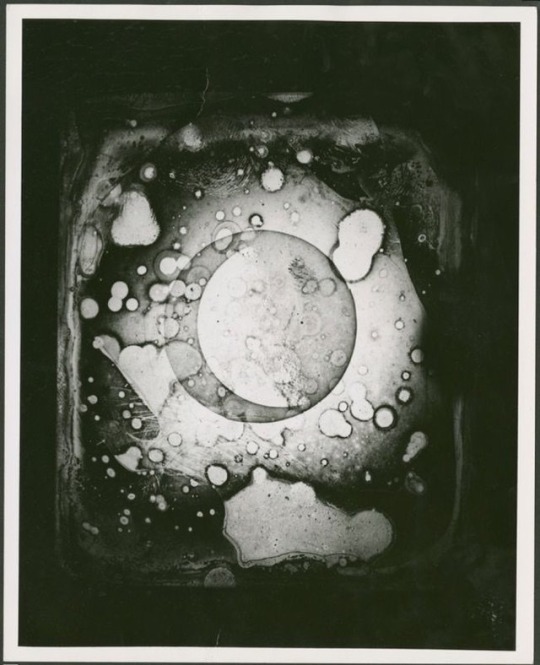
First photo of the moon, John W. Draper 1840
171 notes
·
View notes
